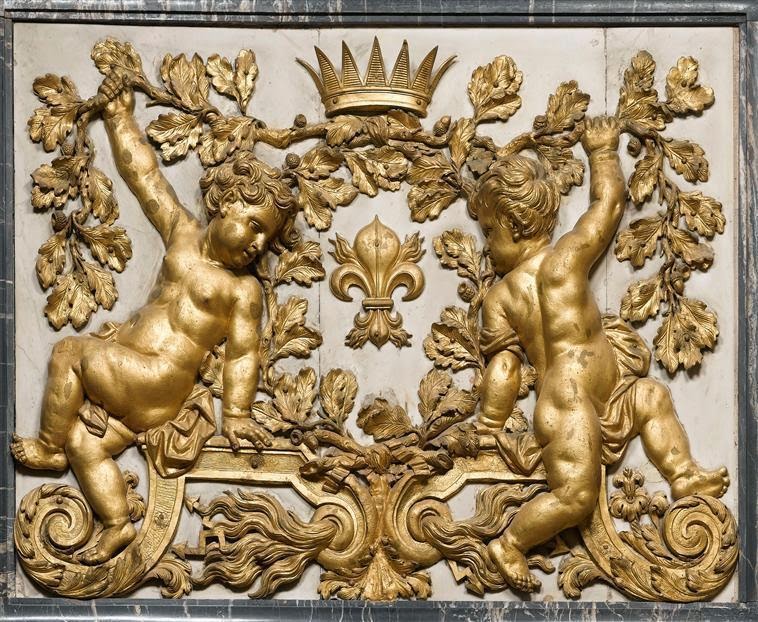Cupid and Psyche by Benjamin West 1808
West never exhibited the present work during his lifetime, probably because of its erotic subject matter and it is not therefore a canvas that would have been known to contemporary critics or the public. For an artist, whose reputation and public image were immensely important to him, it can be seen as an unusually personal essay. The subject of Cupid and Psyche, however, has been commonly treated in western art since the Renaissance. The literary source is Lucius Apuleius's second-century A.D. work, The Golden Ass, which Voltaire considered to be the Greeks' most beautiful fable. A new translation by Hudson Gurney had been published by J. Wright in London in 1799.
However, the subject that West chose is one of the less commonly represented episodes of the story of Cupid and Psyche in The Golden Ass. Psyche, who has fainted after opening the vase she was given in Hades by Prosperina and commanded by Venus not to open, is revived by Cupid's kiss.
With honied words, around his form
With fond devotion now she twines,
With rapt'rous kisses pressed and warm
Each soothing, witching art combines.
Forgetting his celestial race
Unconscious of his own misdeeds
He yields to her resistless grace -
Who can resist when woman pleads?
West's treatment of Cupid and Psyche follows that found in several other well-known works from the period, in particular that by François Gérard of 1798 and Antonio Canova's sculptural group of 1793 (both Louvre, Paris). The emphatic profiles of both Cupid and Psyche in the present work suggest a lingering influence of the French Neoclassical paintings that West had seen on a visit to Paris in 1802.
Indeed, the present work is extremely close to Canova's composition which West had seen in the Murat collection on that trip. The positions of the two heads and Psyche's arms upraised around Cupid's neck seem to have been directly inspired by the marble. Von Erffa and Staley (op. cit., p. 243) point out that the specific source for the pose of Psyche comes from an engraving after a painting showing an embracing faun and bacchante published in the English edition of the Antiquities of Herculaneum in 1773, to which West was one of the original subscribers. They further note that the same ancient painting was identified by C.F. Fernow in 1806 as the inspiration for Canova's composition. In 1806, at a dinner party sitting next to the collector Henry Hope, West recalled seeing the celebrated works of Canova in Paris (Farington Diary, 3 October 1802 and 25 June 1806, v, p. 1899; vii, p. 2796). At that time Canova's Cupid and Psyche was, in fact, owned by Hope.
The detail in the upper right corner of two doves being attacked by a darker bird does not correspond with anything directly in Apuleius's text but is analogous with scenes of aerial conflict in versions of Death on the Pale Horse which West first painted in 1796.
West also painted a different subject from the story of Cupid and Psyche, The Eagle Bringing the Cup of Water to Psyche (Princeton University Art Museum, Princeton), which he exhibited at the Royal Academy of 1805.
West was the first American artist to achieve an international reputation and to influence artistic trends in Europe. He was born on 10 October 1738 in Springfield (now Swarthmore), Pennsylvania, the tenth and youngest child of John West (1690-1776), innkeeper, and his second wife, Sarah (1697-1756), daughter of Thomas Pearson of Marple, Pennsylvania. Both parents came from Quaker families. In Philadelphia about 1747, West met the young English artist William Williams (1727-1791) and received some instruction in painting. Aged eighteen he set himself up as a portrait painter in order to earn money to continue his studies in Italy. Helped by a group of local subscribers he travelled to Italy 1760-63, studying under Mengs and Gavin Hamilton and acquiring a taste for neoclassical history painting. He settled in London as a portrait painter in 1763 and exhibited regularly at the Society of Artists and the British Institution. He was a founder member of the Royal Academy on its formation and succeeded Reynolds as President in 1792. He was History Painter to George III and the monarch's favorite artist. He was the teacher of a number of important American-born artists of the next generation including John Singleton Copley, John Trumbull and Charles Wilson Peale. He died in London in 1820 and was buried in St. Paul's Cathedral.

















No comments:
Post a Comment